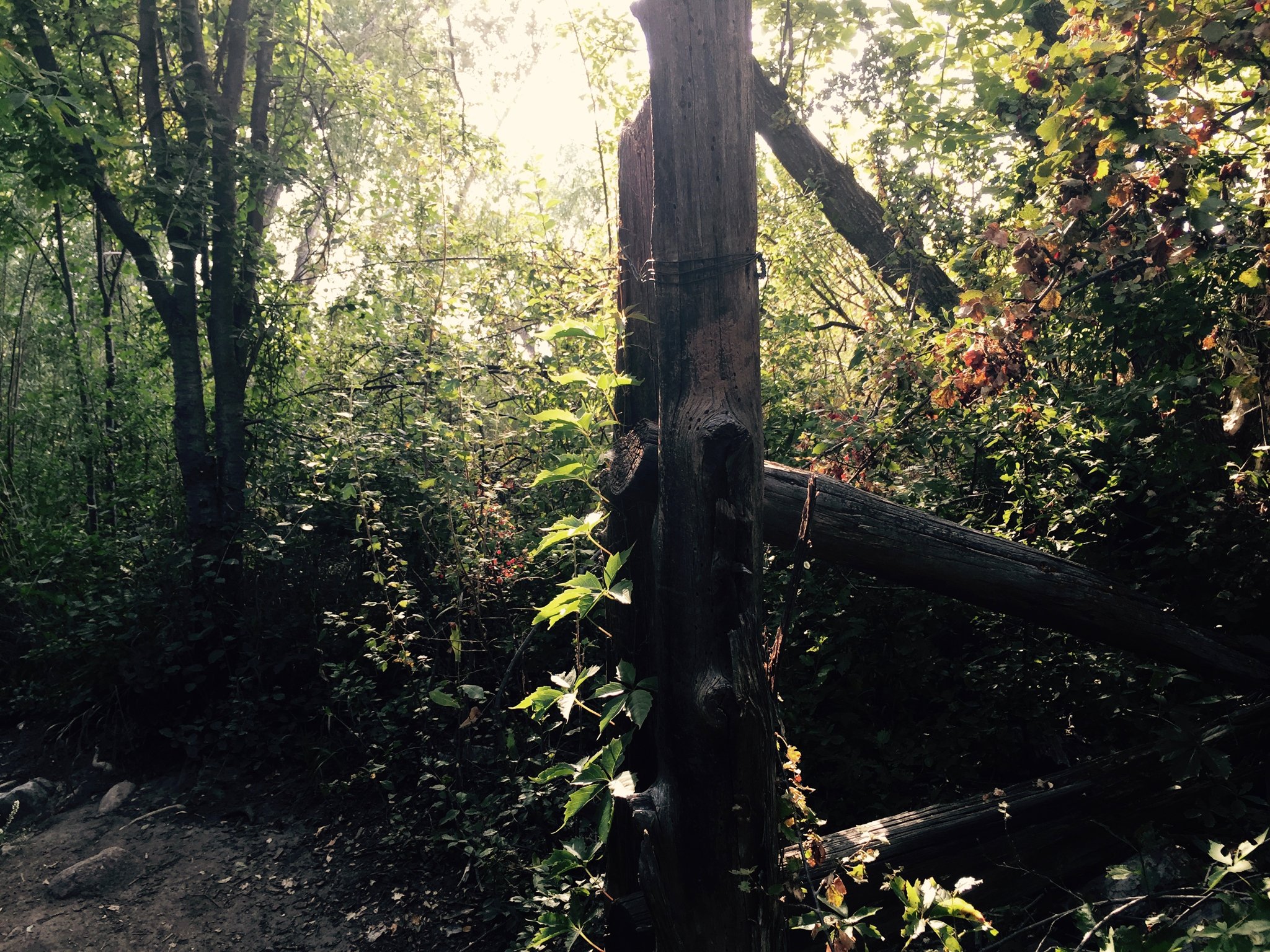A Person of Tohu
Identity Critical Mass and the Practice of Centerlessness
Photograph: by the authr, outside Upaya Zen Center, Sante Fe NM USA, August 2015
I bear witness daily to my identities cross-currents of various social, ancestral, genetic and spiritual inheritances. All mixed with spirals of assimilation, internalized cultural erasure. These often pull to different direction, resulting in anxiousness, confusion, groundlessness.
Tisha B’av, the day dedicated to the historic destuction of the two Hebrew temples and countless calamities that befell Jews in the last two thousand years, and the universal exile of awareness from its embodied experience felt by humans everywhere. This year, at the peak of a ritual I held, we chanted Tehom el Tehom Koreh from Psalms 42:8- the void calls out to the void, space calls out to space, emptiness calls out to emptiness. In that space of Tehom, related to the word Tohu, the edges of the suffering, the edges of the identity that holds to it and our minds holding to that identity, become…fuzzier. There is a permeation of the surrounding, an opportunity to shift, allowing other currents to inform, coalesced masses to soften.
Tohu is first mentioned in the second sentence of the book Bereshit (Genesis 1:2) referring to the a-priori infinity-totality (commonly interpreted as the void or emptiness) that existed before any form, and over which the awareness of Elohim (the multi-faced, center-less aspect of God) hovered. Kabbalah teaches that it is the only source from which tikkun (healing, repair of the brokenness of the world) rises; The verse in Shemot (Exodus) 2:10, כִּ֥י מִן־הַמַּ֖יִם מְשִׁיתִֽהוּ׃, Ki Min Hamayim Mashitehu, described Pharoah’s daughter naming Moshe (Moses) because she has pulled him ot of the waters. Hassidic sages interpreted this as being: the source of Supernal awareness, which is embodied in the deity of Moshe, is rising from waters of Hessed, the emanation of lovingkindness which are Tohu, as in MashiTEHU.
This experience of Tohu reverbrates throughout the Torah’s mythology - Moshe encounters this state of centerlessness Not Knowing in the Arafel / Mist at the peak of Mount Sinai, and the Israelites follow a pillar of fog as they navigated the wilderness. Later, in the early mystical book Sefer Yetzirah, Asha”n / smoke is recalled again as the acronym of the three elments of reality - Olam / Material world, Shana / Time or change, Nefesh / consciousness.
While this may sound theoretical or cerebral, it is in fact the only practical way I have to move through these complex and contradictory spirals. Practically, adding space into my mind, through meditation or prayer, revealing the space in my mind, recognizing that my mind’s nature itself is this space, recognizing how inherently there is never one identity to land on.
My inheritance, Jewish especially but no limited to, is so loaded and complex that it may be a blessing in disguise - it is completely unresolvable! Those of simpler or more convenient inheritance may feel comfortable and never inquire into the nature of this human experience. My dense inheritance (karma!) forces me to do so, to excavate the nature of the self, the nature of my grief, and find that which is possible and mysterious on its other side. Being dense, how can awareness find a way, trickle in, smooth edges, expand and nurish?
A Person of Tohu is one who practices this. For me, practice is a kind of covenant with reality, in Hebrew - a Brit; returning one’s awareness, moment after moment, and ‘partnering’ with this very reality, grounded in Not Knowing, aware of ancestors as causality, creative, and porous; at times, the partners, the practioner and reality, merge.
Anchoring one’s self in a center-less awareness does not negate the nuanced nebulas that make up one’s self and perception - they see them, as well as the space between them and that is their essence, mingling, permeating, at times coming to firm definition and at times their edges recede and dissolve.
This person of Tohu becomes artisanal in crafting and shaping this space of Tohu. They learn to recognize when pockets of Tohu becomes ossified, restricted, read, painful. Knowing their own limitations and pitfalls where their awareness is not fully free to manifest boundaries, Not unlike membranes in biological cells, these know what to let pass through, and what to keep out. All the while knowing that the entire petri dish, the laboratory and the technician are all Tohu itself.
This model of person of Tohu must have been influenced onto by the Zen Buddhist koan from the Book of Serenity (Shoyoroku, Congrong Lu) number 38, Linji's True Person. Linji Yixuan (臨濟義玄; simplified Chinese: 临济义玄; 812-867, Rinzai in Japanese) is the founding figure of the RInzai school of Zen, known for their Koan study. In this Koan, Linji addressed the assembly, saying, "There is a true person of no rank. He is always leaving and entering the gates of your face. You beginners who have not witnessed him: Look! Look!"
-
Related links:
Nine consciousness of Smoke and Radiance - Refracting Motifs in Sefer Yetzirah with the Zohar as Meditation Objects
Brit Milah As Covenant Of Mind - Hebrew circumcision reimagined for contemplative practice, in which the newborn is the contemplative insight into the sense of self
Walking in Each Other’s Temples - On cultural humility discussing Judaism and Buddhism.
